Good Friday marked around the world
- Published
Striking ceremonies have been taking place around the world as many Christians marked Good Friday.
Jesus died on the cross on Good Friday, the Bible says, and was resurrected on Easter Sunday.
Images show people taking part in processions and re-enactments of Jesus Christ's last journey before he was crucified.
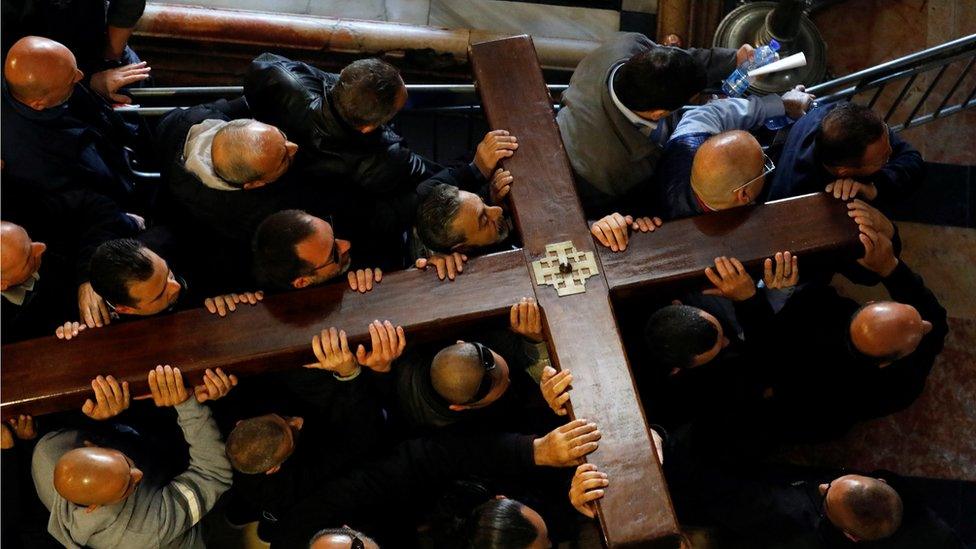
In Jerusalem people carried a large wooden cross into a church.
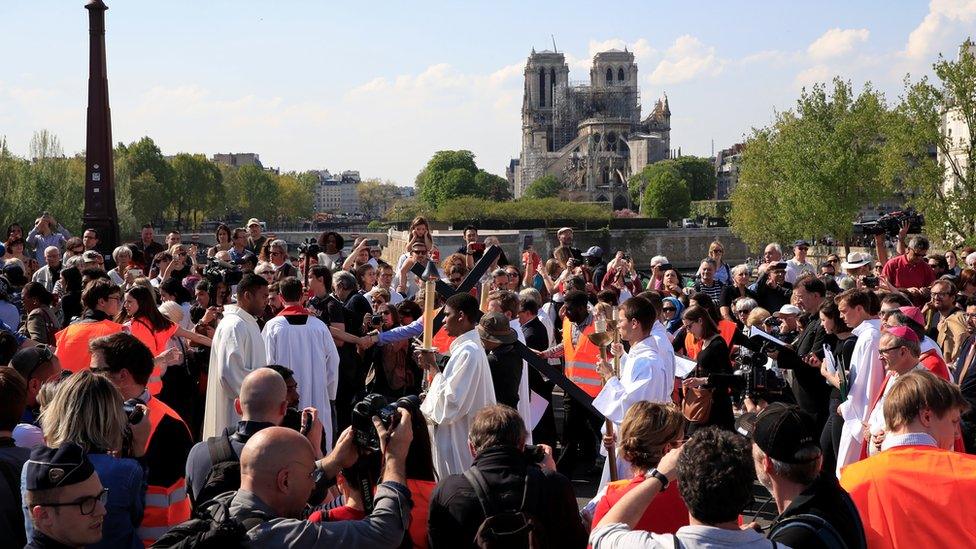
In Paris, crowds attended a "Stations of the Cross" procession along the banks of the River Seine, within sight of the fire-damaged Notre-Dame cathedral.
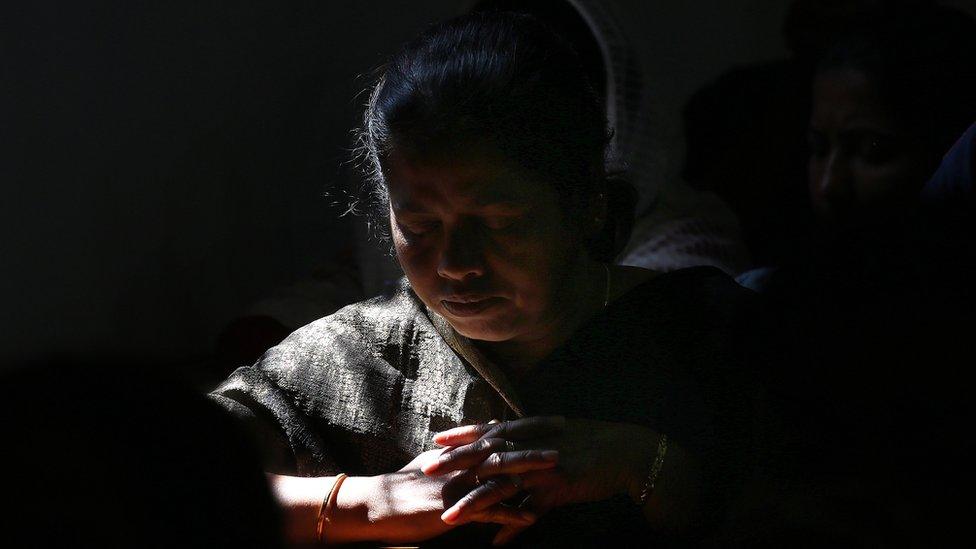
An Indian Christian woman prays at a cathedral in New Delhi, India.
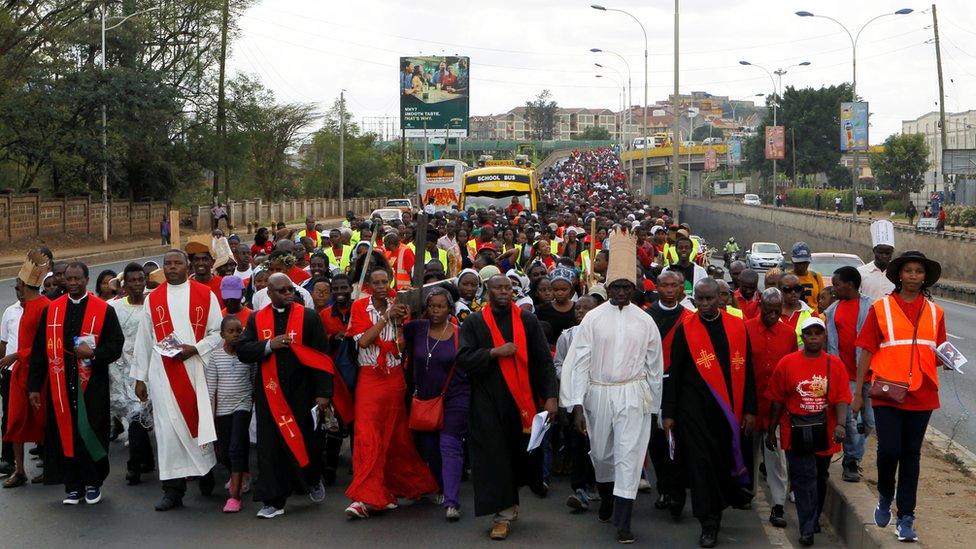
Hundreds of worshippers can be seen attending a procession in Nairobi, Kenya.
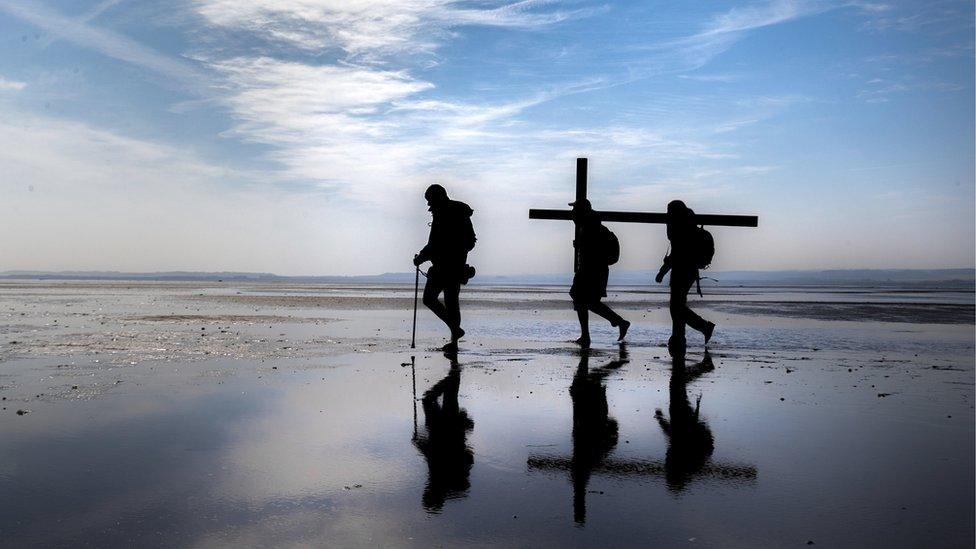
In England, pilgrims carried crosses to the Holy Island of Lindisfarne in Northumberland.
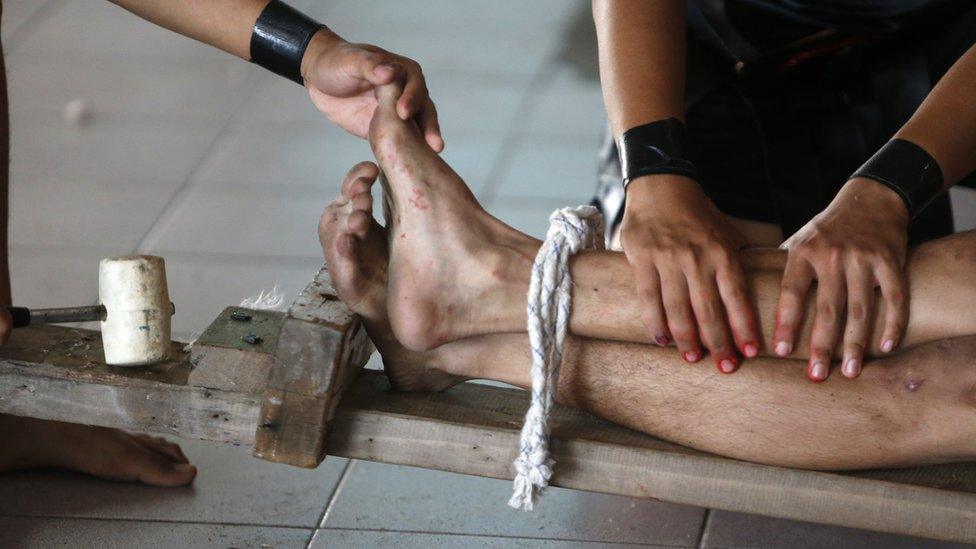
The image above is from Banda Aceh in Indonesia where a man portraying Jesus is tied to a cross.
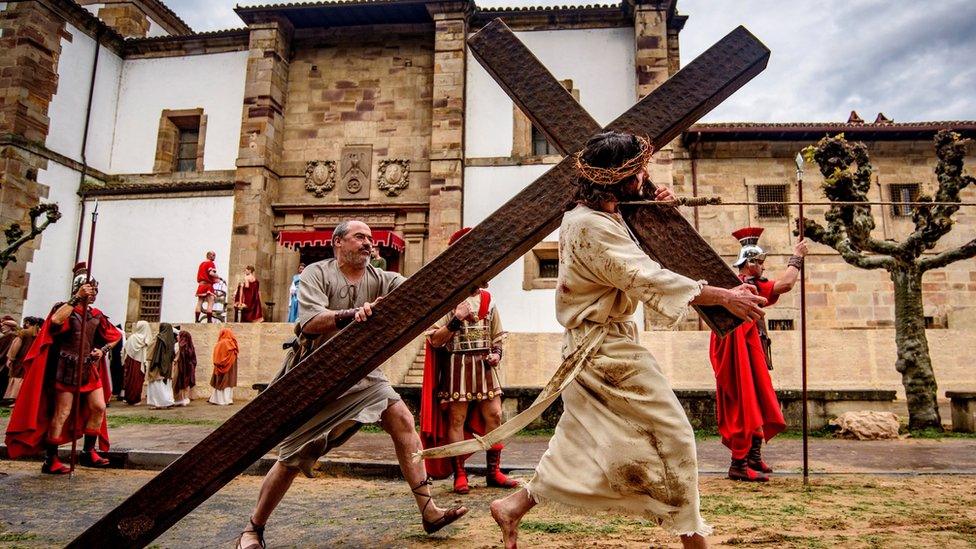
Around 350 people re-enacted the Passion of Jesus in Spain's Basque Country.
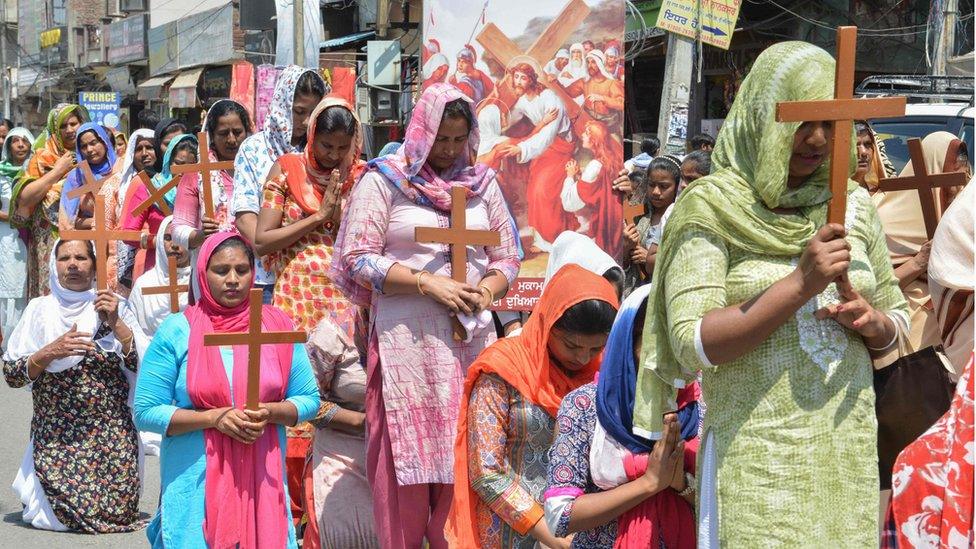
The procession above took place in Amritsar, India.
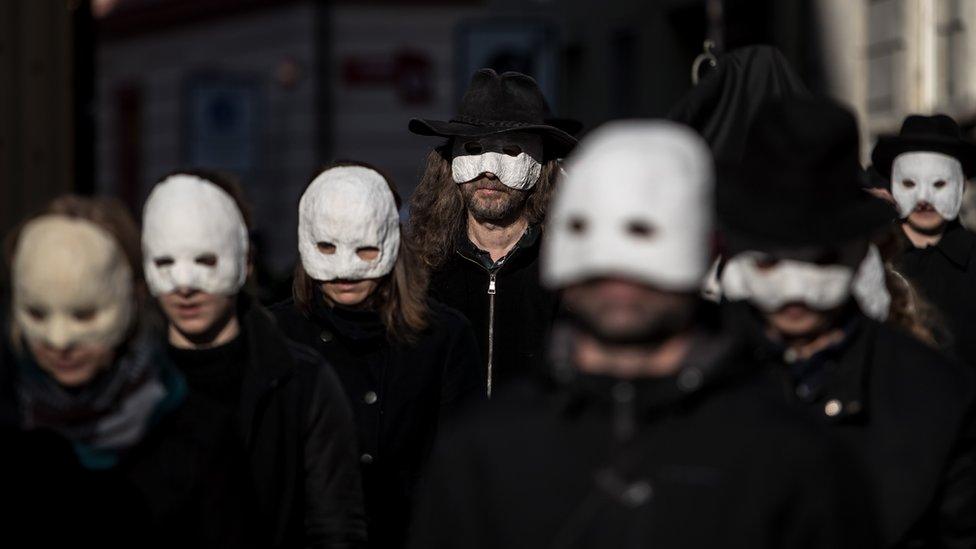
In the Czech Republic, around 70 people wearing masks and pushing wooden rattles walked through the streets of Ceske Budejovice.
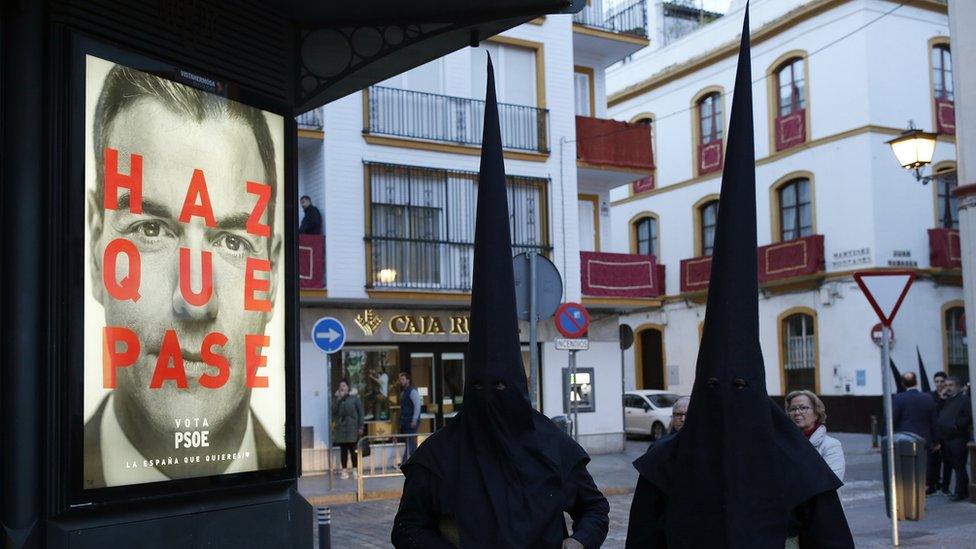
Penitents stand next to an election poster of Spain's Prime Minister Pedro Sanchez. They wear hoods in a tradition that dates back to the 15th Century and allows sinners to repent without being identified.
All photos copyright.
- Published19 April 2019
